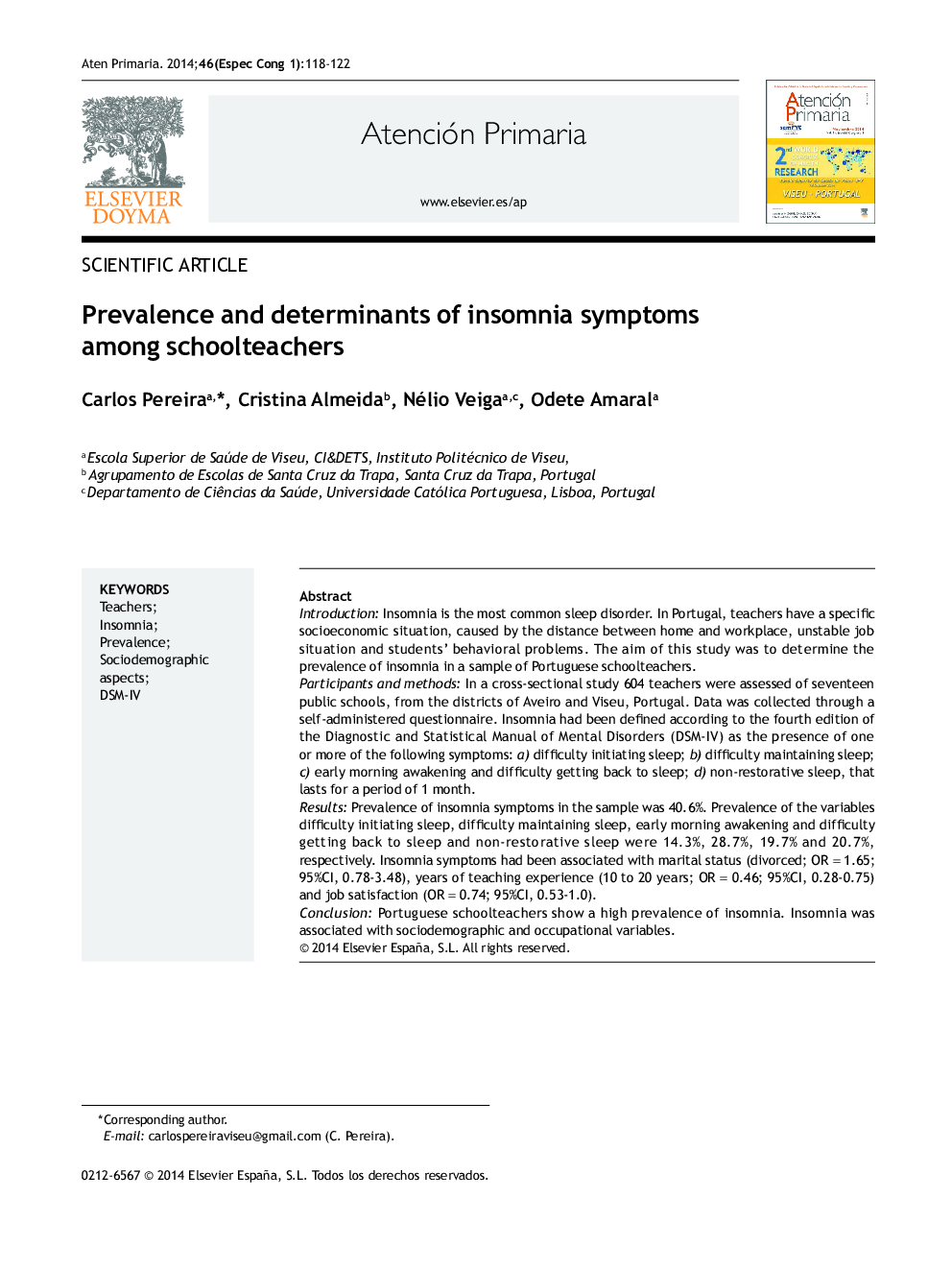| Article ID | Journal | Published Year | Pages | File Type |
|---|---|---|---|---|
| 3457255 | Atención Primaria | 2014 | 5 Pages |
IntroductionInsomnia is the most common sleep disorder. In Portugal, teachers have a specific socioeconomic situation, caused by the distance between home and workplace, unstable job situation and students’ behavioral problems. The aim of this study was to determine the prevalence of insomnia in a sample of Portuguese schoolteachers.Participants and methodsIn a cross-sectional study 604 teachers were assessed of seventeen public schools, from the districts of Aveiro and Viseu, Portugal. Data was collected through a self-administered questionnaire. Insomnia had been defined according to the fourth edition of the Diagnostic and Statistical Manual of Mental Disorders (DSM-IV) as the presence of one or more of the following symptoms: a) difficulty initiating sleep; b) difficulty maintaining sleep; c) early morning awakening and difficulty getting back to sleep; d) non-restorative sleep, that lasts for a period of 1 month.ResultsPrevalence of insomnia symptoms in the sample was 40.6%. Prevalence of the variables difficulty initiating sleep, difficulty maintaining sleep, early morning awakening and difficulty getting back to sleep and non-restorative sleep were 14.3%, 28.7%, 19.7% and 20.7%, respectively. Insomnia symptoms had been associated with marital status (divorced; OR = 1.65; 95%CI, 0.78–3.48), years of teaching experience (10 to 20 years; OR = 0.46; 95%CI, 0.28–0.75) and job satisfaction (OR = 0.74; 95%CI, 0.53–1.0).ConclusionPortuguese schoolteachers show a high prevalence of insomnia. Insomnia was associated with sociodemographic and occupational variables.
